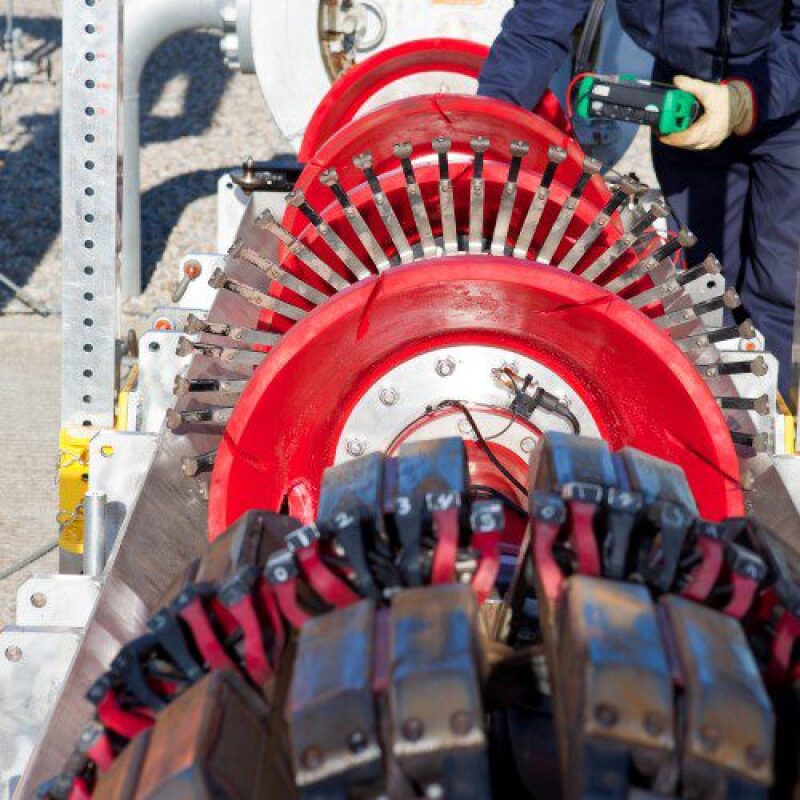Depending on whom one speaks with, one can get varying definitions of what the midstream sector within the oil and gas industry entails. Several sectors tend to lump the midstream as a subset of the downstream sector; however, we will define “midstream” as the part of the oil and gas industry beginning with when the hydrocarbon leaves the production facility to when it arrives at the final processing facility and everything in between.
These will include the following:
Pipelines. Both offshore and onshore. Typically used for long distances and high-volume transmissions
Oil/liquefied natural gas (LNG) tankers. Transport of large quantities over very long distances
Rails. Cost-effective method of transfer over land that already has an established rail network
Barges. Travels over large bodies of water and although slow, can be a cost-effective method of transporting oil
Trucks. Travels over highways and roads and can reach destinations that may not have any other type of access
This article discusses some of the career choices available in the midstream sector. There are some obvious interfaces between sectors, and the following are also considered as midstream:
Gas processing and receiving facilities
LNG terminals
Oil/LNG tankers
Tank farms
Floating production, storage, and offloading facilities
Career Paths
There are several career paths one can pursue based on the stage of the life of the assets involved. These can be categorized as follows:
| Construction | Engineering, procurement, and construction (EPC) contractor, service provider |
| Operation | Operator, service provider |
| Maintenance/Integrity | Operator, service provider |
| Decommissioning | Contractor, service provider |
Construction
All infrastructure/assets within the oil and gas industry go through some form of EPC contracting for the design, construction, and commissioning of the assets. The EPC contractors tend to be focused on the process, civil and structural aspects of the project, and generally depend on a service company to provide the precommissioning and commissioning services. Qualifications which are typical for the EPC contractor revolve around process, civil and structural engineering, as well as project management, electrical, and instrumentation engineering.
The interface between upstream and downstream really begins at the precommissioning phase of the project where several of the major service providers are a division of an upstream service provider. Within the precommissioning service provider landscape the primary qualifications sought are mechanical engineering and project management. The list of job functions for a typical project would include one or more of the following:
Project manager
Project engineer
Field engineer
Field supervisor
Field operator
Laborer
Depending on the project type there would be several points of interface between the service provider and the EPC contractor as well as the end client who would have his own project manager/pipeline or process engineer monitoring the progress.
Within a construction site there would also be the need for the support structure, which includes the following jobs:
Health, safety, and environment professionals—safety officers and medics
Procurement and logistics professionals—including warehousing
Schedulers/planners
Maintenance
Quality assurance/quality control
Operations
The careers paths available within operations depend on the type of asset involved. Within the pipeline industry, careers would be focused on monitoring flowrates and pressures on a daily basis from both the transmission and receiving end. These careers would usually include process engineer, operations supervisors, and process operators who man the consoles. At LNG terminals and other receiving terminals, the job functions required would follow a similar line.
The careers available in the transportation sector of midstream are slightly different as there are physical connections which are required to be made to vessels with limited, set storage capacities. There is an added level of risk when it involves the ocean transfers of cargo as these connections can be manual, semi-, or fully automatic. The operations of these vessels and vehicles will not be discussed as they align to their respective transportation divisions; however, the actual filling of these vessels has to be managed by both the sending and receiving parties. Careers in such instances include terminal managers, supervisors, and operators, as well as in some cases pier men for handling and making the actual connections.
Maintenance

There are typically two types of maintenance which take place on any infrastructure, both of which are geared toward maintaining the integrity of the assets: the first is preventative, and the second is shutdown. Within the pipeline sector, preventative maintenance would take the form of routine pigging, corrosion control, and chemical injection for inhibition of wax, hydrogen sulfide, etc. These can be taken care of in-house through the operator’s own maintenance department or via contracts to specialized service providers.
Shutdown maintenance is usually the result of a major occurrence such as leakage or blockage, which typically requires highly specialized service providers who employ unique and often proprietary technologies to solve these challenges. Within the receiving, processing, and storage sector, preventative maintenance usually takes the form of corrosion control, valve maintenance, and repairs to minor leaks. There are also scheduled turnarounds (TARs) where components are serviced, repaired, or replaced as per the manufacturer’s recommended/required schedules in order to maintain certifications or warranties. These types of activities usually involve mechanical/structural engineering contractors. Within the transportation sector, maintenance activities would be focused on integrity of the storage vessel as well as the vehicle/vessel.
Decommissioning
Decommissioning activities are very similar to maintenance activities in that they employ the same techniques. However, decommissioning parameters tend to be more stringent since the assets may be left in-situ, as with certain pipelines; but at the end of maintenance activities, the system is reinstated. For pipelines, the precommissioning service provider usually also does the decommissioning work, and there are companies that specialize in decommissioning. The storage sector tends to attract even more specialized service providers for tank cleaning, etc., that also provide said services during maintenance activities.
Conclusion
There are numerous career paths available within the midstream sector due to the very diverse nature of the systems involved. There are avenues for virtually all engineering disciplines and the opportunity for cross-training and advancement is tremendous, as operational experience tends to weigh heavily as one progresses. One need not confine their search to operators and major service companies as there are several smaller localized specialist service providers that offer viable and fulfilling career options.

Terrance Gopaul is a technical sales advisor for pipeline and process services (PPS) at Halliburton. He started his career as a cementing supervisor in 2001 and transferred to PPS in 2004. He has worked in Trinidad, Iraq, UK, Angola, and most recently India where he is currently stationed. His areas of expertise include pipeline precommissioning and commissioning services, pressure testing, helium leak detection, nitrogen purging, chemical cleaning, and other services associated with asset integrity.

